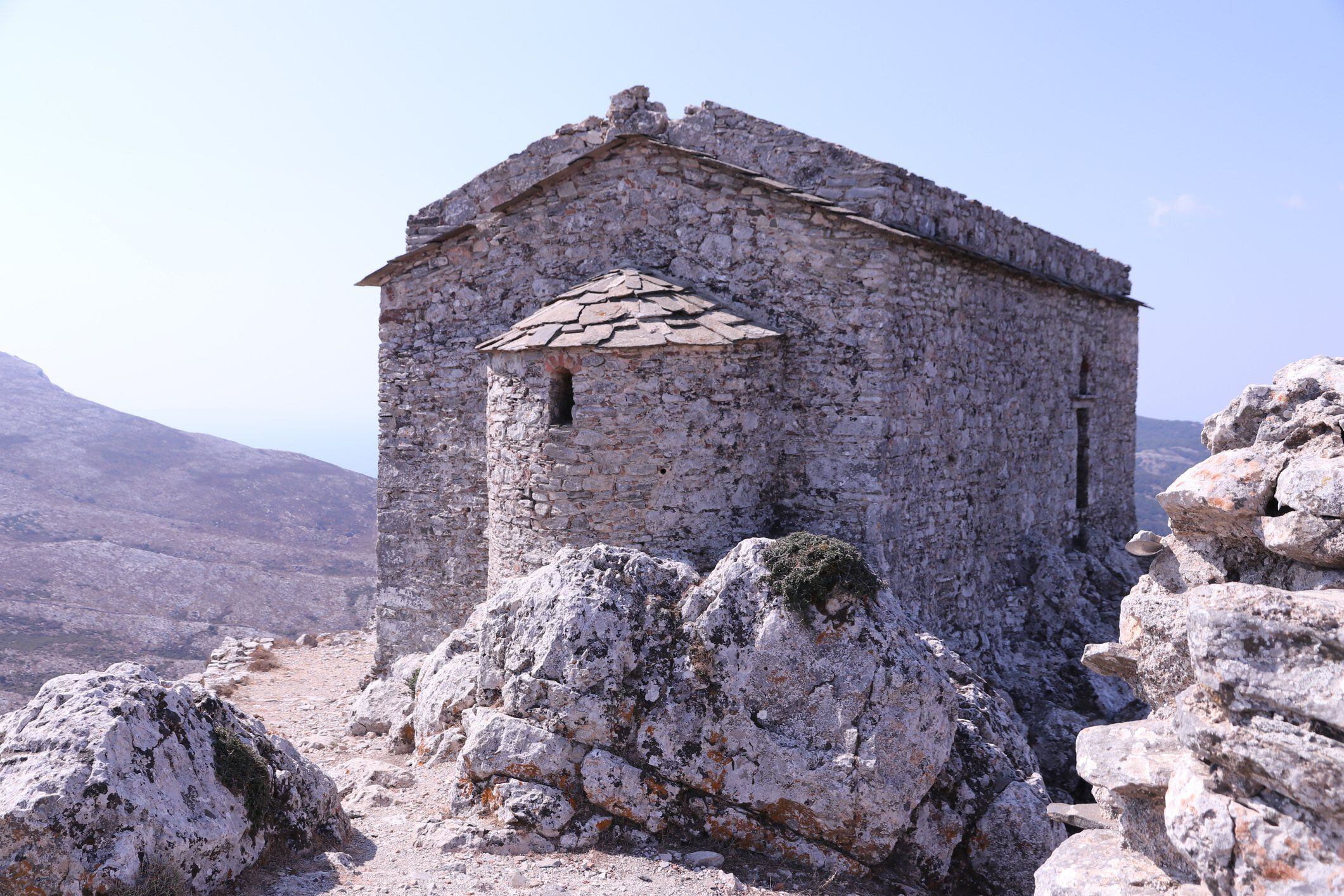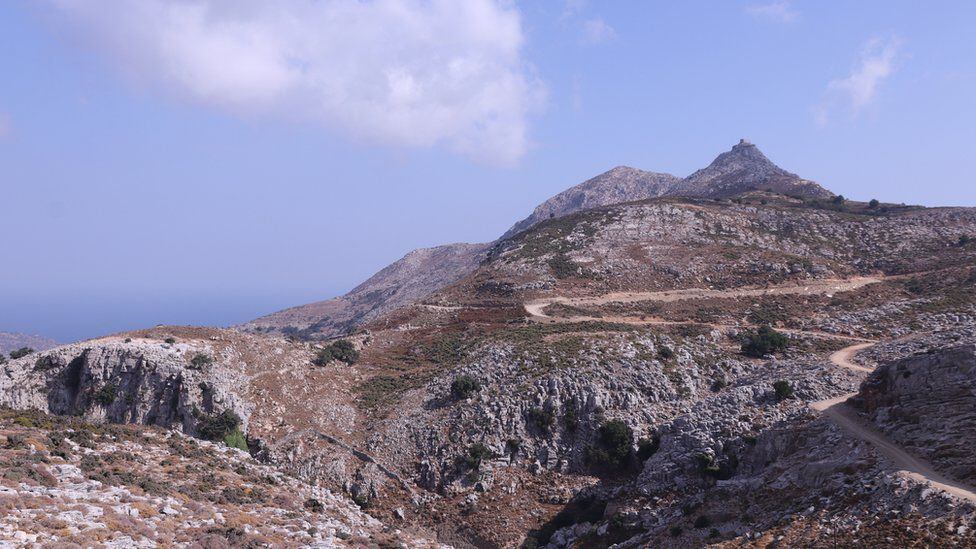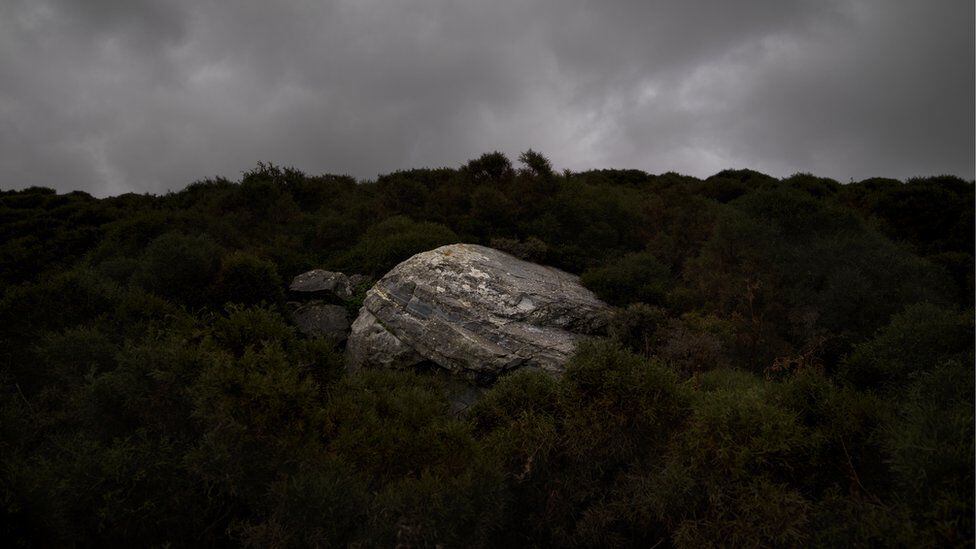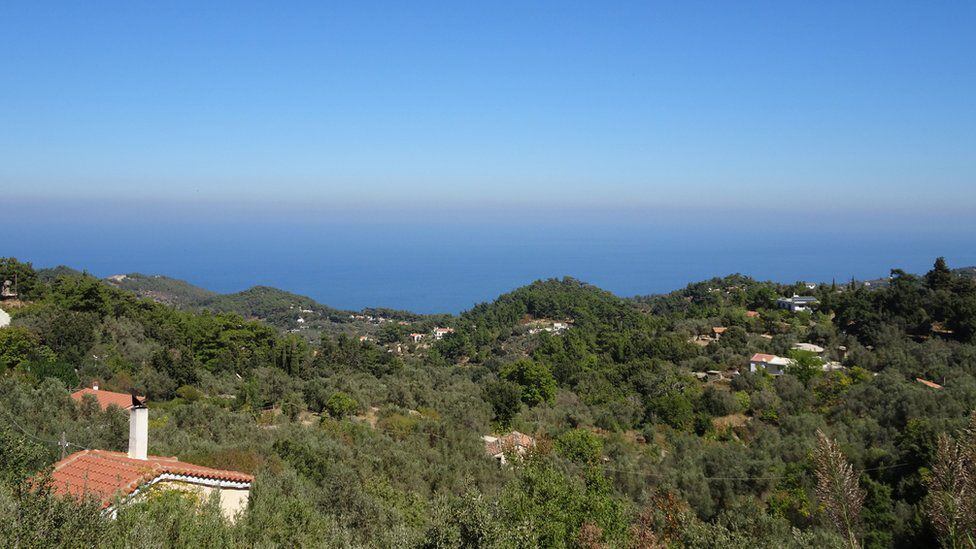As I sailed at twilight towards the northern Aegean island of Ikaria, with its jagged peaks rising from the narrow rocky shore, I noticed that the flickering lights emanating from the houses were not mainly along the shoreline. , as is the case on most of the Greek islands, but they were predominantly scattered on the mountains behind. I wondered: why would the inhabitants make life more difficult by choosing to live on the steep slopes, far from the level ground near the sea?
I soon found out that the sea was both the blessing and the curse of Icaria. It allowed the island to spread its reputation for excellent – and potent – Pramnian wine, and to trade its prized product throughout Ancient Greece, along with olives and honey. But the sea also brought pirates, attracted by its highly valued production and the prosperity it brought.
Look: Almost a hundred refugees found naked on the border of Greece and Turkey
Icaria was not the only island in Greece to be besieged by pirates, but it suffered the added complication of an endless cycle of regimes. The Persian Empire, the Delian League association of Greek city-states, the Romans, the Byzantine Empire, the Republic of Genoa, and the Knights of St. John all exerted varying influence on Icaria between 500 B.C. C. and 1521 AD. C., when Ikaria fell firmly under the rule of the Ottoman Empire, where it would remain for more than three centuries.
But, due to its geography, the island was always a frontier post for whatever territory it belonged to, and regular periods of instability, accompanied by a poorly policed coast, allowed piracy to thrive.
Although the first reports of piracy in Icaria occurred in the first century BC. C., was a more or less rampant phenomenon during the Roman regime (late 3rd century BC to 5th century AD) and the Byzantine regime (5th to 12th century AD). Then, with the arrival of the Genoese in the 14th century, the icarians resorted to destroying their own ports to deter invaders. But even that action was not enough.
With few resources to repel their attackers, the islanders decided to take up the challenge. They retreated deep into the mountainous interior, bending over backwards to convince anyone sailing off Icaria that it was deserted, building communities that were seemingly invisible, at least before electric light. It was because of this elaborate and daring strategy, practiced by the islanders for several centuries, that I came to learn more about it.
A sanctuary between the mountains
I met Eleni Mazari at her office in the northern port of Evdilos. Mazari runs a real estate company, but the wall at her entrance pointed to her other lifelong passion: the story of Icaria. Here were shelves full of models of the type of houses the islanders of old built, commonly known as “anti-pirate houses”.
These low-rise stone dwellings incorporated natural features of the landscape such as rocks, jutting outcrops, and scrub. Large rocks, which were scattered on the high slopes of the mountains, usually formed a large part of the walls and roofs, while the other walls were made of dry stones. The layout was simple. the houses did not have much more than a door and a stoveas the islanders spent most of their time outside.
“It was a complete departure from the type of structure that most people associate with Greece,” said Mazari, who has been fascinated by anti-pirate houses for years, photographing them and collecting all the available literature about them.
“The age of great temples was over. The icarians were building houses designed to be hidden from view, and to do so they had to go into the wild heights where they could not be seen from the sea. There would be many times, from the Roman period on ahead, in which they temporarily hid from the invaders in the mountains, so the possibility of doing so was always on their minds if necessary.”
It was the incorporation of Icaria into the Ottoman Empire that persuaded the Icarians to completely exchange the coasts for the crags.. The Ottomans proceeded to rule Ikaria carelessly, allowing a wave of piracy to disrupt or deter other states’ maritime trade. The options available to the icarios were limited: flee, with little means at their disposal, to almost certain death; leave the island for safer places; or seek sanctuary under the shelter of the mountains.

camouflaged community
This time, however, it would be a long-term move. The islanders would hide their society in the highest rocky peaks of the Aetheras Mountains for the next 300 years. This period was called the piratiki epochi (“the pirate age”)with its early years known revealingly as the “century of darkness.”
“It was a self-sufficient society, due to its courtyards, its narrow terraces where they grew vines, olives, raised goats, produced honey,” Mazari explained. “Icarians have always been used to creating something with very little. So what seemed to outsiders like an uninhabitable mountainous land was not the same for our ancestors. If the houses could remain invisible to pirates, it was worth the trouble.” sorry to move.”
As I drove to the north coast of the island and looked out over what is affectionately known as the “old west” of Icaria, it seemed to me that the island’s rocky interior would be hardly habitable even today. The terrain is arid, rocky and virtually desert; the slopes slope so sharply towards the sea that there was hardly enough level ground to clear space for a house or for a road to twist over the edge.

My destination was Lagkada, the place where many icarios decided to retire. This refuge in the heights is a sacred place in the hearts of the islanders: without it, the population would very likely have become extinct. The road was too steep and unpaved to try to reach by car, so I hiked a hair-raising trail that wound around the steep edge until I reached a lush valley that could never have been detected from below.
Here, still without a sign to indicate it, and still hidden behind the olive trees and rocks with surreal shapes, it was the cradle of Icaria’s anti-pirate civilization.
Despite knowing that there were numerous anti-pirate houses in the vicinity, I wandered up and down the valley for several hours and did not see a single one. It was only after a final inspection of the valley from above that I glimpsed an opening in a rock too angular to be produced naturally. He had discovered the old community jail.
The effort it took (no billboards with information or guided tour options) made me appreciate how expert the islanders were in building houses that blended perfectly into nature. Life must have been hard for them, constantly under threat of pirate attack and knowing that camouflage in this wild territory was their only defense.
The rocks determine the structure

My next stop was further inland, in the vineyards of the Afianes family. In addition to being producers of some of the best wines on Icaria, owner Nikos and his daughter Eftychia are considered experts on the island’s history. And they agreed to show me the anti-pirate house on their property.
“We have no shortage of large rocks on Icaria,” Eftychia smiled, explaining that these rocks determined the location and appearance of most anti-pirate houses. “The rocks make as much of the structure of the house as its shape allows, one or two walls or perhaps, if the rock has an overhang, a roof. If the terrain was too steep to create a flat lot, as what used to be, people would go to great lengths to gouge the rock out of the ground to create a level terrace.”
He added that traditionally it was always built towards the bottom of the rock, in the direction of the land, so that the structure could not be detected from the sea. “And because the most useful rocks are naturally spread out, the communities were too, which meant there was less chance of being discovered if pirates invaded,” he said.
We enter the anti-pirate house, now used to store wine. The thick walls, Nikos explained, would have ensured that it stayed cool during the hot summers and retained heat during the winter.

The locals went to extra lengths to make their settlements invisible to outsiders. “The structure was low, a single story, lower than the maximum height of the rock,” Eftychia noted. Also, the houses did not have chimneys to avoid forming telltale columns of smoke. Instead, when they used the stove, they took out a stone on each side of the walls that did not have mortar so that the smoke subtly dissipated. People only interacted during the night. According to Mazari, during the pirate era, not even dogs were afraid that their barking would alert invaders.
The anti-pirate houses may have been built as places of emergency retreat, but they had a lasting effect on Icarian society, long after warships dispatched by the US, UK, France and Russia finally put an end to privateering. in the Aegean in the 1820s.
The tendency for villages to continue to be remote and mountain-based, and for islanders to enjoy staying up late at night, is attributed to the pirate age. Even places of worship built in the anti-pirate style survive, such as the Theoskepasti chapelwhich dramatically and closely lies on a rock ledge near Evdilos.
As for Lagkada, although it would seem that what was once the vital center of the pirate age was now abandoned, that is not entirely true.
“There is still at least one man living there permanently,” Nikos said. “His family never left him. Most of us only see it when we go to the panigýri [festival] of Lagkada, which he organizes. The rest of the year, he must live surrounded by ghosts.
Source: Elcomercio
I am Jack Morton and I work in 24 News Recorder. I mostly cover world news and I have also authored 24 news recorder. I find this work highly interesting and it allows me to keep up with current events happening around the world.

:quality(75)/cloudfront-us-east-1.images.arcpublishing.com/elcomercio/GE4DEMRNGEYS2MJZKQYDAORRHA.jpg)

:quality(75)/cloudfront-us-east-1.images.arcpublishing.com/elcomercio/XK4KIZ6EGZF6PPFSX2QOEY4OBY.jpg)
:quality(75)/cloudfront-us-east-1.images.arcpublishing.com/elcomercio/A5XZCPO2FVH3VJKYQCGLK6TL4E.png)
:quality(75)/cloudfront-us-east-1.images.arcpublishing.com/elcomercio/QHZC6PNJU5AURGNKPZOZ6Y6XT4.jpg)
:quality(75)/cloudfront-us-east-1.images.arcpublishing.com/elcomercio/CEDFMU7CYRDJLHZKMA54UXWEYE.jpg)
